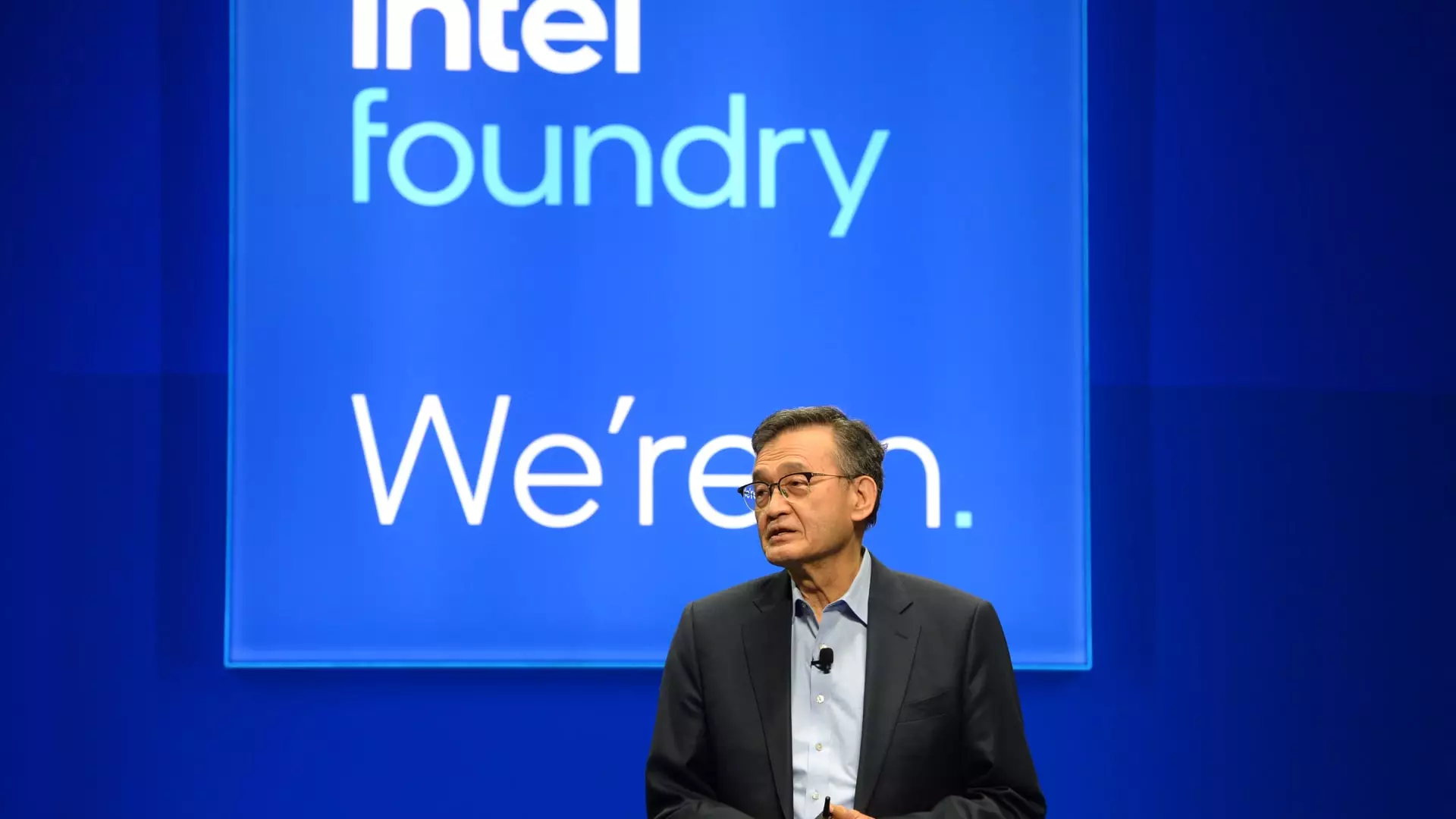Intel’s latest financial disclosures reveal a company teetering on the edge of decline, hampered not only by external market forces but also by internal misjudgments. Despite posting better-than-expected earnings—showcasing resilience in a challenging environment—the market’s reaction was crushing, with shares plummeting over 8%. This stark divergence underscores a hard truth: financial metrics alone cannot conceal underlying strategic failures. Intel’s decision to drastically cut foundry investments, coupled with its inability to secure key external clients, highlights a fundamental flaw in its business model. Instead of leveraging its technological prowess to become a dominant player in the fiercely competitive semiconductor manufacturing space, it now risks becoming irrelevant. The company’s stubborn reliance on internal capacity and the false hope of capturing an outsized share of the AI market—dominated convincingly by Nvidia—exposes a shortsighted approach that diminishes long-term prospects.
Decaying Confidence in Foundry Ambitions
Perhaps the most alarming aspect of Intel’s recent developments is its wavering commitment to its foundry business. Once viewed as a potential game-changer, the foundry pursuit is now under direct threat of being discarded altogether if external customer commitments do not materialize. This pivot reflects a deeper issue: Intel’s inability to attract significant external clients, despite its substantial investments in new nodes like 14A. Such failures point to a misalignment between Intel’s technological advancements and market needs. Instead of pioneering the future of chip manufacturing, Intel appears ensnared in internal inertia, paralyzed by its own underperformance and skepticism from potential partners. This approach risks turning what could be a strategic advantage—its manufacturing expertise—into a liability that the company might abandon altogether.
Operational Inefficiencies and Costly Overreach
Beyond strategic indecision, Intel’s operational mismanagement is glaring. The company admits to overexpanding its footprint—investing heavily in facilities that lack sufficient demand—and now faces the difficult reality of underutilized assets. The decision to cut costs by slowing production at key plants in Ohio, Germany, and Poland signals a retreat from its previous aggressive expansion plans. However, these measures alone are insufficient; they come as band-aids on deeper wounds inflicted by years of overinvestment and misjudged market timing. The writedown of $800 million due to excess tools with no reuse potential paints a sobering picture of wasted resources. This pattern illustrates how ill-conceived expansion—driven by overly ambitious expectations—has saddled Intel with structural inefficiencies that will hinder its ability to compete effectively.
Leadership Turmoil and Strategic Ambiguity
The leadership changes, including the appointment of CEO Lip-Bu Tan, have yet to stabilize the company. Tan’s remarks about the difficulty of his early tenure reveal a leadership struggling to define a clear, cohesive strategy amidst internal chaos and external skepticism. His acknowledgment that “most demand has yet to emerge”—following years of overexpansion—underscores a broader problem: Intel’s failure to align its technological innovations with viable market demands. The company’s tendency to chase new manufacturing nodes without guaranteed customer commitments is symptomatic of a misguided innovation-focused approach that neglects fundamental market realities.
Market Realities That Cannot Be Ignored
Ultimately, Intel’s predicament underscores a pivotal reality: success in the semiconductor industry is no longer solely dependent on technological superiority but equally on strategic partnerships, market alignment, and operational agility. Its stubborn attempts at self-reliance, internal expansion, and technological leaps have left it strained and uncertain. While some analysts view the foundry retreat as a “positive step,” such optimism is optimistic at best. The market is unforgiving, and Intel’s credibility diminishes with each passive retreat from its ambitions. If the company cannot prove it has the agility to adapt and capitalize on its strengths, it risks not only losing share but also becoming an industry relic, rather than a leader.
The truth remains painfully clear: Intel’s survival and resurgence depend on decisive strategic recalibration, not on clinging to obsolete aspirations or inflated expectations. It’s time for the company to accept the fundamental shifts in the industry and reorient itself—if it hopes to carve out a sustainable future rather than merely marking time on decline.

